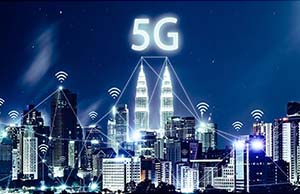What is 5G?
5th generation mobile networks, abbreviated 5G, are the next generation of wireless telecommunications.. Carriers are marketing 5G for its provision of higher speeds, greater capacity, seamless connectivity, and lower latency, offering 1 gigabit per second or faster for greater numbers of users. 5G technology, according to available descriptions, combines fiber deployment with wireless connections to end-users, with the fiber needing to be within about 1,000 feet of the end user.
What will 5G do?
5G uses significantly smaller cells than traditional wireless network buildouts. At aminimum, 5G small cells provide a means to increase capacity in existing networks. Carriers suggest that 5G will support billions of connected devices, enabling the “Internet of Things,” driverless cars, virtual and merged reality, smart agriculture, and other technologies that require heightened network capacity, communication, and data transfer. Verizon says “fixed wireless” (home Internet) will be its first 5G application. AT&T has talked about using 5G to replace its old DSL offerings, enabling the company to deliver a quad play of DirecTV service, 5G home Internet, wireless phone, and home phone.
Read the CETF 5G Overview The Future of Mobile Networks and 5G

